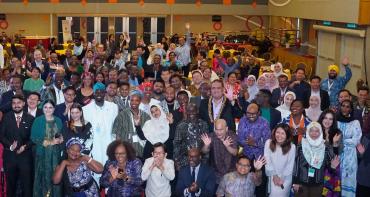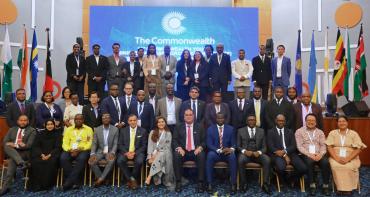By Commonwealth Deputy Secretary-General Deodat Maharaj

On the face of it, young people across Asia can look forward to a bright future. While economic growth may have slowed in some countries, barely a day goes by without a new statistic apparently confirming the long-term trend: that opportunities abound.
Among Asia’s eight Commonwealth member countries - Bangladesh, Brunei Darussalam, India, Malaysia, Maldives, Pakistan, Singapore and Sri Lanka - total exports of goods and services increased four-fold in the last 15 years: from US$381 billion in 2000 to US$1.6 trillion in 2015. By 2030, Asia is predicted to make up more than 40 per cent of the combined gross domestic product (GDP) of the Commonwealth’s 53 countries.
But macro-economic indicators do not tell the whole story, especially when it comes to youth development. In Asia, like many other parts of the world, young people face many challenges to realising their hopes and aspirations including high levels of inequality, poverty and marginalisation. Early and forced marriage is just one example, with estimates that more than half of girls in some parts of Asia, including for example, in India are married before the age of 18.
The Youth Development Index, launched by the Commonwealth Secretariat in 2013, classifies Asian Commonwealth member countries in the middle range of youth development. The index ranks countries according to employment, political and civic empowerment, health and wellbeing, and education. No country from Commonwealth Asia is in the top 20 global rankings. Singapore is the best performing overall, at 23rd, but it leaves its neighbours behind in several measures.
This poses a critical question for policy-makers in Asia. How can we best create opportunities for young people, in order that they may both fulfil their individual potential and also contribute to their nation’s overall economic and social development?
In New Delhi last month, Commonwealth Youth Ministers from across the region came together to grapple with this question. The Asia Region Commonwealth Youth Ministers Meeting was a chance to share national experiences and commit anew to policies which can improve young people’s life prospects.
To this end, the Ministers recognised the need to invest in and deliver decent employment and education prospects, and to promote the creativity and leadership of adolescents and young adults. Ministers also forged a common consensus on the need to improve youth participation in decision-making processes.
The commitment of the governments was matched by thought-provoking contributions by young people taking part at a parallel Youth Leaders’ Forum. It was heartening to see Ministers heed the youth representatives’ call for investment in entrepreneurship and skills training, as evidenced in their declaration of support for young Asian entrepreneurial networks, such as the Commonwealth Alliance of Young Entrepreneurs–Asia (CAYE-A).
At the meeting, there was also – crucially - a consensus on the need to improve the collection, and disaggregation, of statistics on youth development, as well as to monitor young people’s progress against the Sustainable Development Goals – global targets which are set to take effect in 2016.
We should not underestimate the importance of data.
The Youth Development Index helps to shine a light on the situation facing young people, however it is only as strong as the statistics it draws upon. As we obtain richer information, on everything from young people’s earnings to educational attainment, we have a better idea about the problems experienced, and our progress in addressing them.
Today, we can say that we are moving away from unreliable barometers of youth development such as GDP. As a result, decision-makers, in collaboration with youth leaders at Commonwealth fora and beyond, are better able to design targeted and practical policy responses.
There is much more to do to ensure that the future is truly bright for Asia’s young people, but at least we can say that the pathway is lit.



